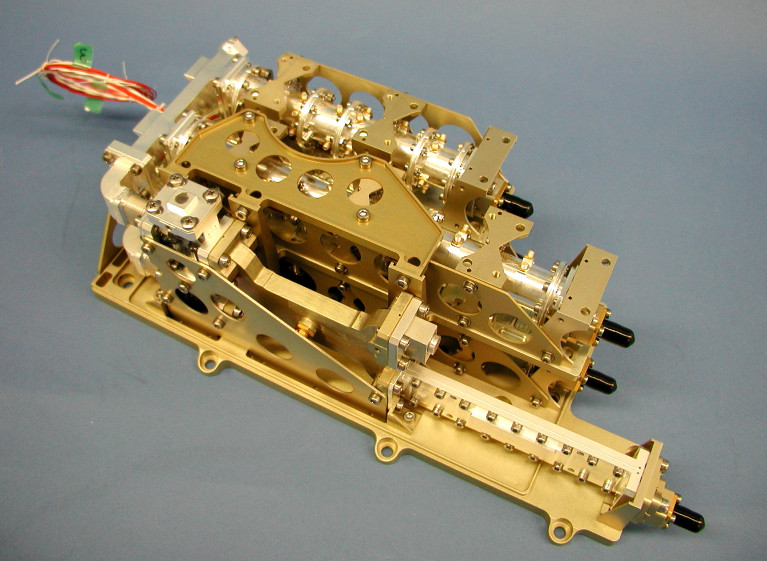
Today’s modern Ka-band multimedia satellites typically have a complex frequency plan, making the input multiplexer (IMUX) a critical component. The electrical and mechanical requirements have become more stringent regarding electrical performance, mass, and size. The design must be compact and stable, both mechanically as well as electrically. At the same time, rapid design procedures are required to meet the short delivery times required by industry.
In response to these demands, Tesat-Spacecom (DE) embarked upon the development of a new line of input multiplexers. In an activity supported by ESA through the Competitiveness & Growth element of the ARTES programme, the company produced a new-generation input multiplexer for Ka-band. It is characterised by a 50% smaller footprint, 30% reduced mass, reduced cost, and improved reliability compared to prior designs.
The activity included the development of software tools that facilitate converting the electrical design into manufacturing data, thereby speeding up the production process. The new software was validated in the Qualification phase of the project.
Since the IMUX was space-qualified, Tesat has been delivering flight models to four customers. This equipment is now flying on seven commercial telecoms missions, currently comprising of more than 1,400 channels, at bandwidths ranging from 16MHz to 400MHz, a significant milestone.
“With the technical support of ESA, we were able to address mechanical stiffness and the resulting electrical stability of our stacked design early on,” says Michael Zedler, Head of Project Development for Tesat-Spacecoms' Passive Microwave Products division. “The Ka-band IMUX has become a strategic addition to Tesat’s growing Ka-band portfolio and helped strengthen our competitive position in the global telecoms market.”




